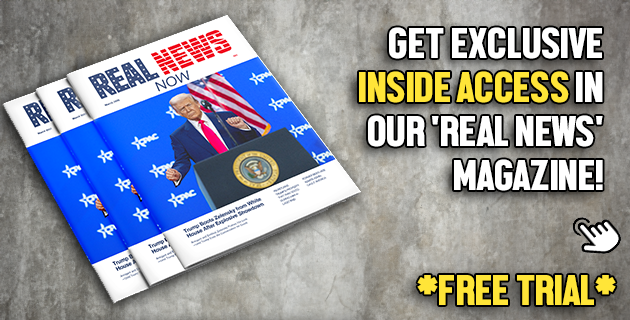Trump’s Bunker Buster vs. Economic Warfare: A Study in Contrast
When President Trump gave the command for US strikes against Iranian nuclear targets on June 21, he had at his disposal impressive ‘bunker buster’ bombs. These powerful weapons could reach deeper underground than anything else apart from a nuclear strike, making for a swift and intense bombing campaign that was over in less than a day. With this short, sharp shock, President Trump could confidently claim victory. However, Trump’s additional battle – the ongoing trade disputes with various countries – does not allow for such a straightforward win.
His strategy in these economic exchanges has often involved threatening to increase the tariffs on goods these other nations export to the US, suggesting that they would be the ones to endure significant losses. But it’s increasingly apparent that his posturing is more often than not just an empty bluff, and those who he is negotiating with are well aware of this fact. This dichotomy between his military action against Iran and his ‘economic warfare’ offers intriguing insights into Trump’s methods of negotiating, and his attitude towards taking risks.
It’s also important to note that what many speculated to be a predictable pattern in Trump’s behavior isn’t quite accurate. The phrase ‘Trump Always Chickens Out,’ dubbed TACO, started circulating the internet in May when a Financial Times columnist noticed a trend where Trump regularly delayed or refrained from imposing his threatened tariffs. However, the reality paints a different picture.
In truth, Trump has enacted new tariffs on products imported from a majority of countries, raising the average import tax from its pre-office level of 2.5% to approximately 15%. Despite the popular belief, it’s the American importers who are bearing the cost of these taxes, thus disproving the notion of ‘Trump Always Chickens Out.’
Iran serves as a case in point. History shows that several of Trump’s predecessors in the Oval Office refrained from an armed assault on Iranian nuclear facilities, opting for diplomacy and negotiations. President Trump initially also followed the diplomatic route, until Israeli airstrikes paved the way for a US strike by significantly weakening Iran’s nuclear capabilities.
The risk associated with this move was substantial, considering the potential for Iran to retaliate – either by organising attacks on American people or disrupting global oil supplies to cause an energy shock. Yet, Trump chose to go ahead with the military action, undeterred by the potential consequences, as he saw the odds overwhelmingly in his favor.
The actions showed Trump as a leader willing to take risks and seize an opportunity when the opponent is at a disadvantage. According to Eliot Cohen from the School for Advanced International Studies at Johns Hopkins University, Trump has a raw instinct for identifying weaknesses in his opponents and isn’t averse to landing a blow when they’re down.
As Iran’s air defense systems lay in tatters and its leader in seclusion, Trump took an audacious gamble by taking a course of action that previous presidents have steered clear of. He felt the potential for success was high, and history may yet prove him right.
But such a domineering stance is not directly transferable to the trade conflict. Compared to Iran, most opponents in this arena show fewer vulnerabilities; hence, a swift, decisive victory – like that in Iran – is elusive. With a deadline for trade agreements looming on July 9, the reality of the trade war’s complexity will become increasingly evident.
In stark contrast to the quick victory in Iran, it is clear that the trade war will not be resolved in a matter of days, weeks, or maybe even years. When Trump first announced major tariffs on April 2, they were delayed the following week due to a major market downturn. This quick reversal shows not strength, but weakness – a result of inadvertent self-inflicted damage.
The markets have been in a state of flux as tariffs are applied, then removed, causing highs and lows across the board. But overall, it seems the financial world is adjusting to the new tariff regime, and it may not be as detrimental as initially feared. Trump’s ability to strike a decisive blow, as he did in Iran, is profoundly tempered in the realm of trade negotiations.
An interesting aspect of Trump’s strategy is that he has yet to precisely outline what he wishes to achieve from China. This vagueness may allow him to declare victory whenever he pleases, outlining his demands retrospectively, based on the concessions he manages to secure from China.
However, China’s reaction to escalating trade tensions has demonstrated resilience. In retaliation to the tariffs, China has imposed new restrictions on rare-earth magnets exports – a realm where China has a near-monopoly with around 90% of the global supply. These minerals are crucial to the production of a range of products, from cars, medical equipment to fighter jets.
As a consequence, American companies requiring these rare-earth magnets are starting to grapple with a shortage that threatens domestic production lines. Therefore, while Trump might have a knack for identifying and exploiting vulnerabilities, he equally recognizes power. If the goal of reinvigorating American manufacturing is to be achieved, securing the necessary components for production is critical.
China’s control over the supply of these key resources shows that it doesn’t lack leverage. Instead, it places Trump in the uncomfortable position of bluffing, and the more he bluffs, the less credible he appears. In light of these dynamics, many investors believe that the July 9 deadline will evolve into another deadline and possibly more to come. However, the markets have largely made their peace with this possibility, evidenced by the S&P 500 stock index, which, after recovering from the April downturn, is nearing record highs again. In the unpredictable realm of trade wars, there are no ‘bunker buster’ victories, a fact markets seem grateful for.



